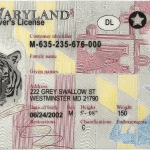Fake identification documents have long been a concern for various sectors, from law – enforcement agencies to businesses that rely on accurate identity verification. As we approach 2025, the landscape of fake IDs is evolving, and machine learning is emerging as a powerful tool in the analysis of ID – related data to combat this issue.
The Problem of Fake IDs
Fake IDs are used for a plethora of illegal or unethical activities. Minors often use them to gain access to age – restricted venues such as bars and clubs, or to purchase alcohol and tobacco products. Criminals may use fake IDs for identity theft, fraud, or to evade law – enforcement. The production and circulation of fake IDs have become more sophisticated over the years, with advanced printing technologies and materials being used to create IDs that are difficult to distinguish from genuine ones.
In the digital age, the problem has also extended to online platforms. Fake identities are used to create fraudulent accounts on social media, e – commerce sites, and financial platforms. This can lead to a range of issues, including spam, phishing, and unauthorized financial transactions.

Traditional Methods of ID Verification
Traditionally, ID verification has relied on visual inspection and basic document checks. For example, bouncers in bars may check for visible signs of tampering on an ID card, such as uneven lamination or misaligned text. However, these methods are often ineffective against high – quality fake IDs. Additionally, human error in visual inspection can lead to false negatives or positives.
Some businesses may also use simple database checks to verify the authenticity of an ID. For instance, checking if a driver’s license number is associated with the correct name and date of birth in a government – maintained database. But this approach has limitations as well. Databases can be incomplete, and sophisticated fake IDs may have information that appears legitimate in these basic checks.
Machine Learning in ID – related Data Analysis
Machine learning, a subset of artificial intelligence, offers a more advanced approach to analyzing ID – related data. Machine learning algorithms can be trained on large datasets of genuine and fake IDs to learn the patterns and features that distinguish between them.

One of the key applications of machine learning in this context is image analysis. ID cards and passports are visual documents, and machine – learning models can be trained to analyze the visual elements of these documents. For example, they can detect subtle differences in the texture of the paper, the quality of the printing, and the alignment of security features such as holograms and watermarks. Deep learning models, such as convolutional neural networks (CNNs), are particularly effective in this regard. CNNs can automatically extract features from ID images and classify them as genuine or fake with a high degree of accuracy.
Machine learning can also be used to analyze biometric data associated with IDs. Biometric features such as fingerprints, facial recognition data, and iris patterns are unique to each individual. Machine – learning algorithms can analyze these features to verify the identity of the ID holder. For example, facial recognition systems can compare the face on an ID card with a live – captured image of the person presenting the ID. If there are significant discrepancies, it could indicate a fake ID.

In addition to visual and biometric data, machine learning can analyze other types of ID – related data. For example, when an ID is used for online transactions, machine – learning algorithms can analyze transaction patterns and associated data (such as IP addresses, device information) to detect any suspicious behavior that may be associated with a fake ID. If a user’s transaction patterns suddenly change or if an ID is being used from multiple unusual locations in a short period, it could be a red flag.
Implementation of Machine – Learning – Based ID Verification
Implementing machine – learning – based ID verification systems requires several steps. First, a large and diverse dataset of genuine and fake IDs is needed to train the machine – learning models. This dataset should include different types of IDs from various regions and time periods to ensure the model’s generalizability. Data collection and curation can be a complex and time – consuming process, but it is essential for the effectiveness of the machine – learning system.
Once the dataset is prepared, the appropriate machine – learning algorithm needs to be selected. As mentioned earlier, CNNs are well – suited for image analysis tasks, while other algorithms may be more appropriate for analyzing biometric or transaction – related data. The model is then trained on the dataset, adjusting its parameters to minimize the error in classifying genuine and fake IDs.
After training, the model needs to be tested on a separate dataset (a validation set) to evaluate its performance. Metrics such as accuracy, precision, recall, and F1 – score are used to measure how well the model is able to distinguish between genuine and fake IDs. If the performance is not satisfactory, the model may need to be refined, for example, by adjusting the algorithm, adding more data, or fine – tuning the parameters.
Finally, the trained and validated machine – learning model can be integrated into existing ID verification systems. This may involve working with hardware vendors to ensure compatibility with ID – reading devices and software developers to integrate the model into existing applications.
Challenges in Using Machine Learning for ID Verification
One of the main challenges is the availability of high – quality data. Obtaining a comprehensive dataset of fake IDs can be difficult due to legal and ethical considerations. Law – enforcement agencies may have some data on seized fake IDs, but this data may not be easily accessible for machine – learning research and development. Additionally, the data needs to be properly labeled (indicating whether an ID is genuine or fake) and pre – processed (cleaned and standardized) before it can be used for training.
Another challenge is the constantly evolving nature of fake ID production. As counterfeiters become more sophisticated, they may develop new techniques to create fake IDs that can bypass existing machine – learning – based detection systems. Machine – learning models need to be updated regularly to keep up with these new threats. This requires continuous monitoring of the fake ID landscape and the ability to quickly incorporate new data and features into the models.
There are also privacy concerns associated with the use of machine – learning in ID verification. Biometric data, in particular, is highly sensitive, and there are strict regulations regarding its collection, storage, and use. Ensuring compliance with these regulations while still effectively using biometric data for ID verification is a significant challenge.
Common Problems and Solutions
- Problem: False Positives
False positives occur when a machine – learning – based ID verification system incorrectly classifies a genuine ID as fake. This can be frustrating for legitimate users and may lead to unnecessary delays or denials of service. Solution: To reduce false positives, the machine – learning model can be fine – tuned to adjust its classification thresholds. For example, if the model is currently set to be very conservative in its classification (resulting in more false positives), the threshold can be adjusted to be more lenient. Additionally, post – processing steps can be added, such as human review of cases flagged as fake by the machine – learning system.
- Problem: False Negatives
False negatives happen when a fake ID is incorrectly classified as genuine. This is a serious issue as it can allow criminals or underage individuals to pass through ID verification checks. Solution: Regularly updating the machine – learning model with new data on the latest fake ID trends can help reduce false negatives. Additionally, using multiple machine – learning models or combining machine – learning with other verification methods (such as human – in – the – loop verification) can provide a more comprehensive approach and increase the chances of detecting fake IDs.
- Problem: Data Overfitting
Data overfitting occurs when a machine – learning model performs well on the training data but poorly on new, unseen data. This can happen if the model is too complex or if the training dataset is not representative. Solution: To prevent overfitting, techniques such as cross – validation can be used. Cross – validation involves splitting the training data into multiple subsets and training the model on different combinations of these subsets. This helps ensure that the model generalizes well to new data. Additionally, regularization techniques can be applied to the machine – learning model to simplify it and prevent it from over – fitting the training data.
- Problem: Computational Requirements
Machine – learning models, especially deep learning models used for image and biometric analysis, can have high computational requirements. This can lead to slow verification processes, especially in real – time applications. Solution: Hardware acceleration techniques such as using graphics processing units (GPUs) can be employed to speed up the processing of machine – learning models. Additionally, model compression techniques can be used to reduce the size and complexity of the model without sacrificing too much accuracy, thereby improving its computational efficiency.
- Problem: Lack of User Trust
Some users may be hesitant to use ID verification systems that rely on machine – learning due to concerns about privacy and accuracy. Solution: Transparency in the design and operation of the machine – learning – based ID verification system can help build user trust. Clearly communicating to users how their data is collected, used, and protected can alleviate privacy concerns. Demonstrating the high accuracy of the system through independent testing and providing an easy way for users to appeal incorrect decisions can also increase user confidence.
Fake ID Pricing
unit price: $109
| Order Quantity | Price Per Card |
|---|---|
| 2-3 | $89 |
| 4-9 | $69 |
| 10+ | $66 |



